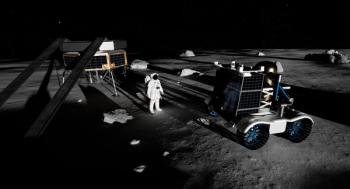
Sam Coleman Receives 2016 EAS Award for Outstanding Achievements in Near-Infrared Spectroscopy
Samuel W. Coleman, who is the owner of Colespec Solutions, has won the 2016 Award for Outstanding Achievements in Near-Infrared Spectroscopy from the Eastern Analytical Symposium (EAS).
Samuel W. Coleman, who is the owner of Colespec Solutions, has won the 2016 Award for Outstanding Achievements in Near-Infrared Spectroscopy from the Eastern Analytical Symposium (EAS). The award was presented to Coleman at a technical symposium at the 2016 EAS conference in Somerset, New Jersey, on November 14.
Coleman’s research career spans more than 40 years, including three years with the University of Florida, and 37 years with the USDA-ARS at two locations: The Grazinglands Research Laboratory in El Reno, Oklahoma, and the Subtropical Agricultural Research Station in Brooksville, Florida. He continues research and training activity with ARS and Gansu University in China.
Coleman received a BS in Agriculture from the University of Tennessee at Martin, and an MS and PhD in Animal Nutrition at the University of Tennessee at Knoxville. He became interested in methodology for ascertaining controlling factors that govern intake of animals, particularly herbivores. While an assistant professor at the University of Florida in the 1970s, Coleman was introduced to near-infrared (NIR) reflectance technology as a potential for feed and forage evaluation. He did pioneering work to estimate botanical composition of forage mixtures and in the direct prediction of intake and in vivo digestibility.
Coleman is the author of more than 220 publications and has made more than 40 invited presentations. He has been principal investigator or coinvestigator on grants totaling more than $5 million. He was awarded the Distinguished Service Award for the southern section of the American Society of Animal Science.
Newsletter
Get essential updates on the latest spectroscopy technologies, regulatory standards, and best practices—subscribe today to Spectroscopy.



